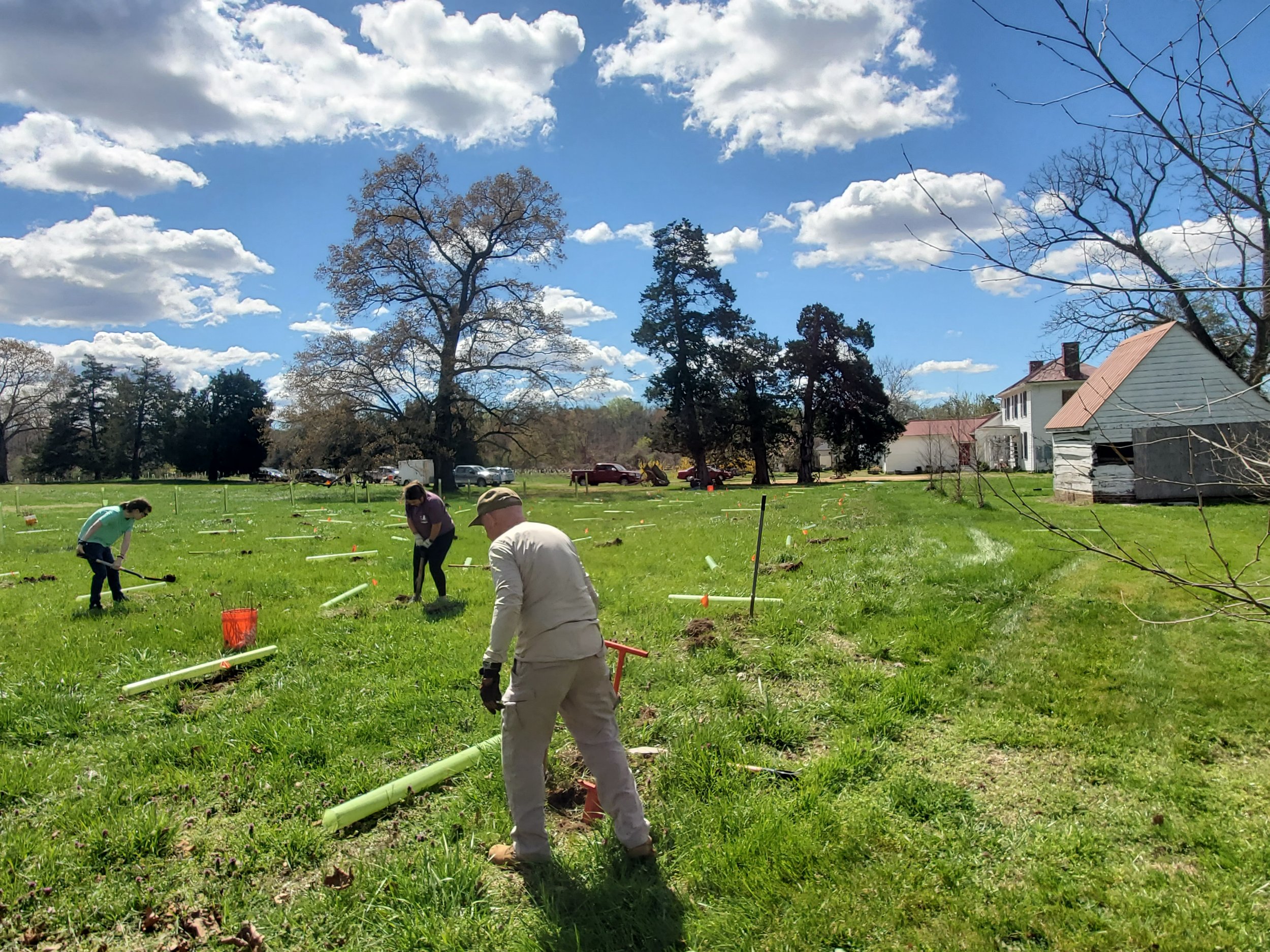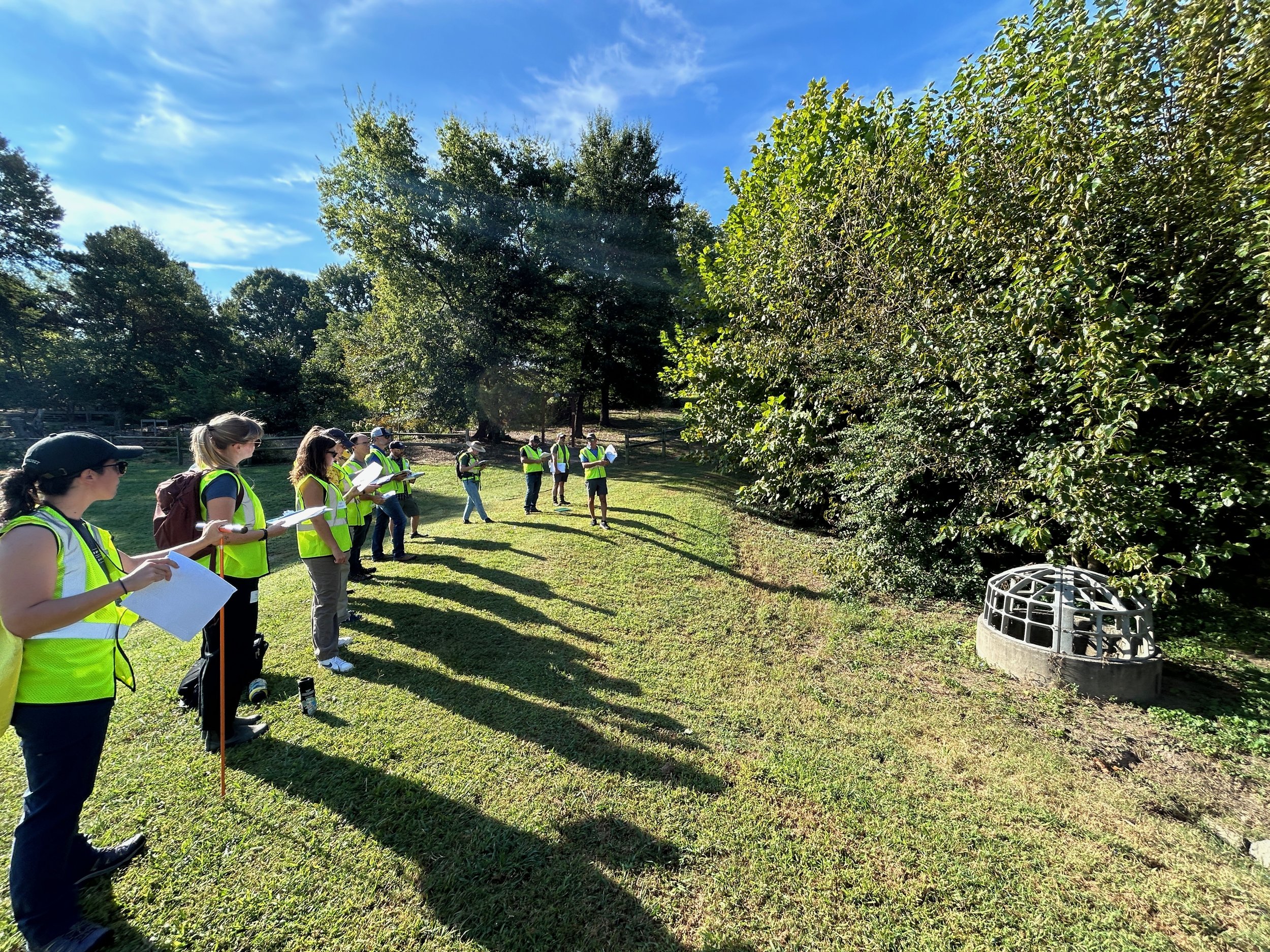
Chesapeake Bay Landscape Professional Program
The Chesapeake Bay Landscape Professional (CBLP) program is a regional voluntary credential system for professionals who design, install, and maintain sustainable landscapes and nature-based stormwater management practices. CBLP is comprised of a baseline credential (Level 1) and an advanced credential (Level 2), with additional professional and workforce development courses on specialized landscape management topics. Courses and workshops are generally approved as Continuing Education Credits (CEUs) for other industry credentials.
In addition to the core certification programs, CBLP offers specialized training courses, including the CBLP-Buffers, CBLP-Crews, CBLP-Shorelines, and the CBLP-Apprenticeship (CBLP-A Program). Each program equips participants with the knowledge and hands-on experience needed to contribute to conservation efforts in the Chesapeake Bay region. Learn more below.
Homeowners, property managers, and other decision makers can find a searchable directory of CBLP certified professionals (CBLPros) here.
Here’s a video introducing the program in 2019:
The Chesapeake Bay Landscape Professional program is organized by a Consortium of partners and administered Bay-wide by the Chesapeake Conservation Landscaping Council (CCLC). As a founding Consortium member, Wetlands Watch serves as the Regional Coordinator for Virginia.
Photo Credit: CBLP
Who Should Get Certified?
The CBLP program is intended for a diverse group of professionals representing green infrastructure and related fields. Level 1 certification is ideal for
Arborists and Foresters
Engineers
Green Infrastructure and Stormwater Professionals Grounds Managers
Landscape Architects and Designers
Horticulturists
Landscape Contractors and Technicians
Soil and Environmental Scientists
Urban Planners
Other Related Professionals
Photo Credit: CBLP
To qualify for Level 1 certification, candidates must meet at least one of the following criteria:
Professional work experience in landscaping or a related field
A degree or certificate in a related field of study
A professional certification that requires continuing education to maintain the credential
Classes are offered in the winter and summer each year and are taught be experienced stormwater, landscape and conservation professionals. The course includes one full day of in-person or two half days of virtual classroom instruction plus a full day field practicum. Participants receive study guides, the CBLP sustainable landscape maintenance manual, and online resources to prepare for the certification exam. To maintain certification, CBLPros must document 20 CEUs every two years and pay a recertification fee.
Photo Credit: CBLP
Level 2 Certification
Level 2 is an advanced credential for professionals experienced in design and/or installation of conservation landscapes and green infrastructure.
Eligibility
To be eligible for Level 2 certification, candidates must
Hold a Level 1 certification and
Demonstrate experience in the design and/or installation of sustainable landscapes
Highly experienced professionals may apply to test out of Level 1 and move directly to Level 2.
Classes are offered in the fall and spring and participants may choose to certify as Level 2 designers and/or installers. The course consists of two classroom days plus a field day, and participants are required to complete a residential design project and pass an exam.
Professional Certifications
Level 1 Certification
Level 1 is a baseline credential in design, installation, and maintenance of sustainable landscapes, with emphasis on properly maintaining stormwater best management practices (BMPs). Level 1 CBLPros are trained to:
Promote and apply the Eight Essential Elements of Conservation Landscaping
Understand the framework of stormwater management and water quality laws, regulations and permits
Have foundational knowledge of design and installation of stormwater practices
Properly maintain stormwater best management practices
Use sustainable landscape maintenance techniques Implement or develop a maintenance plan and schedule
Level 2 CBLPros are trained to
Promote, design and install BMPs for local retrofit, cost-share and stewardship programs
Create and construct sustainable landscapes with BMPs integrated into an attractive and functional landscape
Use native planting design techniques that reduce plant failure, improve public perception, and support wildlife habitat
Use design techniques that simplify, reduce and/or improve maintenance needs
Use installation and site protection techniques to reduce BMP failure, soil erosion/compaction, and tree or habitat loss during construction
Professional Development Workshops
The CBLP program offers multi-day professional development workshops tailored to provide the specialized knowledge and skills needed to implement living shorelines and riparian buffers.
Photo Credit: CBLP
The 4-day course teaches participants how to use desktop and field analysis tools to gather data needed for project design and permitting. Participants learn how to create visual site plans and graphics that comply with permitting requirements and identify construction materials and methods that reduce environmental impact. The program covers the roles of regulatory agencies, funding and cost-share programs, the construction process, and the development of maintenance plans to ensure the long-term success of living shoreline projects. This training prepares participants to manage every stage of a project, from initial planning to ongoing maintenance, making them valuable contributors to sustainable shoreline management.
Riparian Buffers
CBLP-Buffers offers comprehensive training in the design, implementation, and maintenance of riparian buffers. This course consists of three sessions, and combines online webinars with in-person field workshops. Participants will learn about site assessments, buffer design, invasive species management, and developing maintenance plans, which are crucial for improving water quality in the Chesapeake Bay watershed.
Living Shorelines
CBLP-Shorelines is designed for professionals looking to expand their services to include shoreline management practices. Delivered in a hybrid format, the course combines online and classroom learning with hands-on fieldwork, covering a comprehensive range of topics such as site analysis, project design, permitting, construction, and long-term maintenance of living shorelines. Participants learn to develop Joint Permit Applications for projects that fall under Virginia’s General Permit 1 or 2, ensuring they are equipped to navigate regulatory requirements effectively.
Workforce Development
Maintenance of living infrastructure practices is critical to their long term success. Well maintained practices function effectively to filter out pollutants and are an attractive landscape feature. Municipal and private landscape crews who service these practices need expertise in the proper techniques to keep BMPs functioning and looking their best. The demand for maintenance services continues to grow as living infrastructure gains wider acceptance and more maintenance contractors are needed to meet that demand. CBLP's workforce development programs address both of these challenges.
Photo Credit CBLP
Crews
CBLP-Crews equips existing landscape maintenance crews with the specialized skills needed to care for stormwater BMPs. This one-day class focuses on the practical skills and foundational knowledge crews and crew leaders need to identify native plants, manage invasive species, and develop maintenance plans to ensure the long-term health and functionality of living infrastructure practices.
Businesses, government, and other institutions or organizations can schedule private training for their employees by contacting our Living Infrastructure Program staff. Participants who successfully complete the course receive a certificate of completion.
Photo Credit: CBLP
Associates
CBLP-Associate (CBLP-A) is an entry-level program for youth, young adults, and those new to sustainable landscape maintenance. The program is delivered in collaboration with a partner, often a high school, workforce development organization, nonprofit, or summer youth employment programs. The partner must have at least one staff person who is Level 1 certified and will become the lead instructor. The program introduces the core principles of green infrastructure and conservation landscaping alongside practical skills that prepare participants for entry-level positions with a maintenance crew.
The length, format, and supplementary modules are customizable for a variety of partner needs. CBLP-A is recognized by the Virginia Department of Education as an industry credential for Career and Technical Education.
Leadership
Stacie McGraw is Wetlands Watch’s Green Industry & Infrastructure Project Director. She has previously served as the Education Program Coordinator, and then Executive Director, of the Virginia Horticultural Foundation. She volunteers with several environmental and horticultural- based nonprofits.










